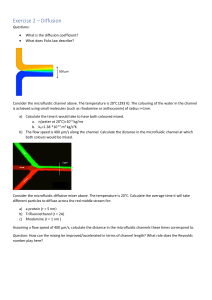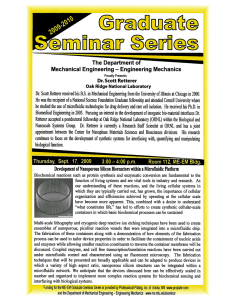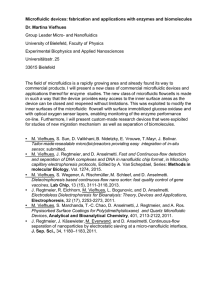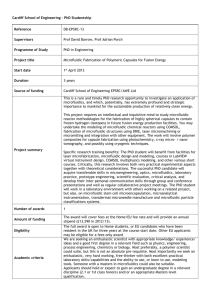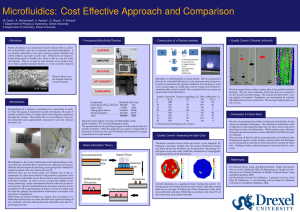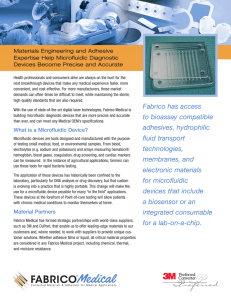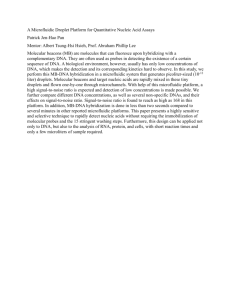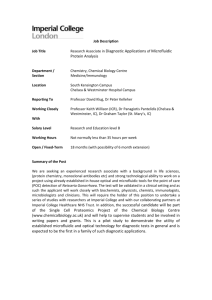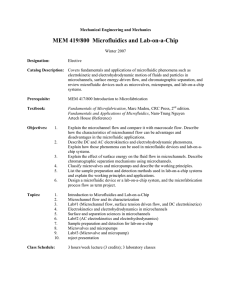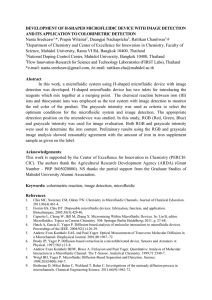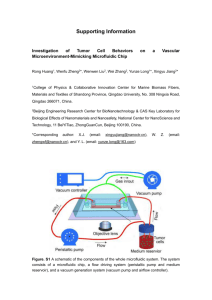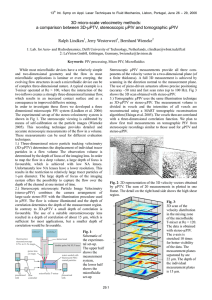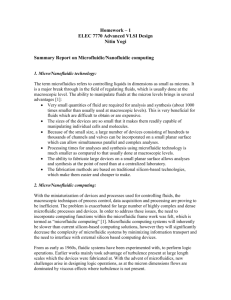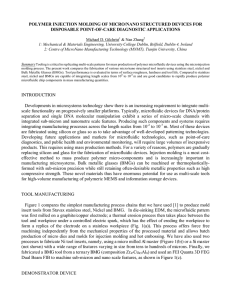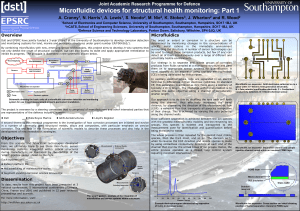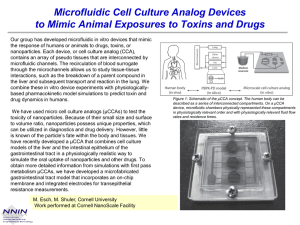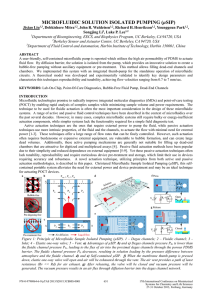Zhao
advertisement
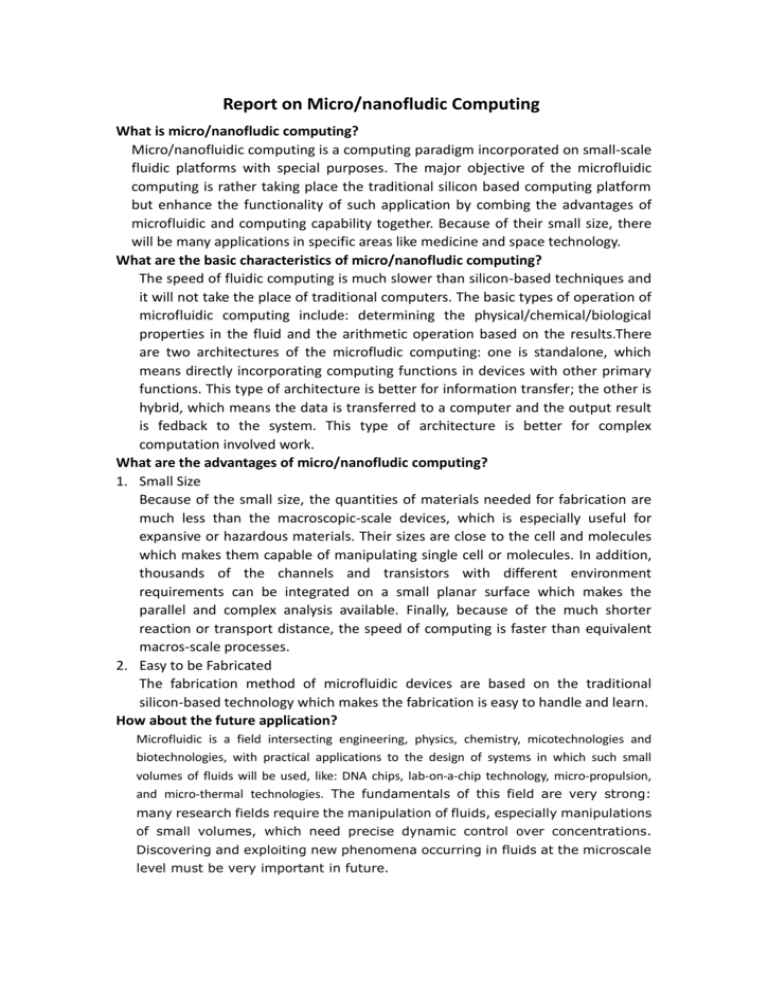
Report on Micro/nanofludic Computing What is micro/nanofludic computing? Micro/nanofluidic computing is a computing paradigm incorporated on small-scale fluidic platforms with special purposes. The major objective of the microfluidic computing is rather taking place the traditional silicon based computing platform but enhance the functionality of such application by combing the advantages of microfluidic and computing capability together. Because of their small size, there will be many applications in specific areas like medicine and space technology. What are the basic characteristics of micro/nanofludic computing? The speed of fluidic computing is much slower than silicon-based techniques and it will not take the place of traditional computers. The basic types of operation of microfluidic computing include: determining the physical/chemical/biological properties in the fluid and the arithmetic operation based on the results.There are two architectures of the microfludic computing: one is standalone, which means directly incorporating computing functions in devices with other primary functions. This type of architecture is better for information transfer; the other is hybrid, which means the data is transferred to a computer and the output result is fedback to the system. This type of architecture is better for complex computation involved work. What are the advantages of micro/nanofludic computing? 1. Small Size Because of the small size, the quantities of materials needed for fabrication are much less than the macroscopic-scale devices, which is especially useful for expansive or hazardous materials. Their sizes are close to the cell and molecules which makes them capable of manipulating single cell or molecules. In addition, thousands of the channels and transistors with different environment requirements can be integrated on a small planar surface which makes the parallel and complex analysis available. Finally, because of the much shorter reaction or transport distance, the speed of computing is faster than equivalent macros-scale processes. 2. Easy to be Fabricated The fabrication method of microfluidic devices are based on the traditional silicon-based technology which makes the fabrication is easy to handle and learn. How about the future application? Microfluidic is a field intersecting engineering, physics, chemistry, micotechnologies and biotechnologies, with practical applications to the design of systems in which such small volumes of fluids will be used, like: DNA chips, lab-on-a-chip technology, micro-propulsion, and micro-thermal technologies. The fundamentals of this field are very strong: many research fields require the manipulation of fluids, especially manipulations of small volumes, which need precise dynamic control over concentrations. Discovering and exploiting new phenomena occurring in fluids at the microscale level must be very important in future. Why are the microfuidic devices not widely used? It is complex that why microfluidic decives are not widely used. I think mostly because it is just a brand new field and there are much work has to be done to develop it into a major new technology. The study unknown characteristics of small volume fluid and the fabrication of the devices for special fluid are all challenging work for people to do. Additional reference: George M. Whitesides. The origins and the future of microfluidics. Nature 442, 368-373 (27 July 2006)
